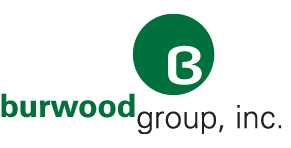Five Guiding Principles for Leveraging the Healthcare Contact Center
Each healthcare organization will chart its own path to maturing its contact center capabilities. Key considerations include identifying a starting point for investment and evaluating technology purchases against a long-term roadmap to help future-proof. A maturity assessment and gap analysis can spotlight where to start and help illuminate a roadmap.
The following are five guiding principles for developing a consumer-grade contact center experience.
First do no harm.
A poorly performing call center can result in frustrated patients or guests whose experience prompts them to look elsewhere for services. Deal with current problems, even if they are not easily discoverable. Using all available data sources, assess call handle times, customer effort required, and call routing accuracy against established targets or external benchmarks. If service levels are not acceptable, these problems must be resolved.
Make it easy for patients to connect.
Health systems should make it very easy for customers to access services using their preferred channel of communication. This access should be aligned from the customer’s perspective across touchpoints such as consumer-facing websites, patient portals and self-scheduling applications, and mobile applications offered to patients.
Remember: Productive agents create happy customers.
Consolidating contact center operations should result in more efficiency. Improving efficiency while offering additional services across more medical groups requires automation. Domain-specific knowledge support including scripts and protocols empowers agents to rapidly resolve service requests. Skills-based routing gives managers the ability to staff flexibly while ensuring target service level performance. Desktop integrations with scheduling, billing, and clinical systems inform agents of highlighted information to reduce contact handle times and increase first-contact resolution rates.
Focus on outcomes. Measure and monitor.
Identify business outcomes that are most important to determining success. These will likely focus on customer experience, agent productivity, and overall operational effectiveness. Many KPIs and metrics can be measured. Pick a few that will highlight performance against your most important outcomes. Ensure reports are available that provide visibility into key metrics and that reporting is timely enough to be actionable.
Align to enterprise vision and objectives.
Leaders from groups representing marketing, population health, clinical quality, and patient experience can inadvertently create competition in internal funding battles. Turn them into allies by working to show how the contact center serves as a vital component of the organization’s comprehensive approach to patient experience.
In this new environment driven by consumerism, competition for patients will only continue to escalate. Successful health systems will learn to better leverage their contact centers as a way to attract and retain patients, and to tackle a complex set of new challenges. A great place to start is to assess your contact center maturity.
For questions or further guidance on healthcare contact center strategy from Burwood Group, contact us.
Ready to Elevate Your Contact Center?
Let our experts create a roadmap to increase ROI and customer experience




